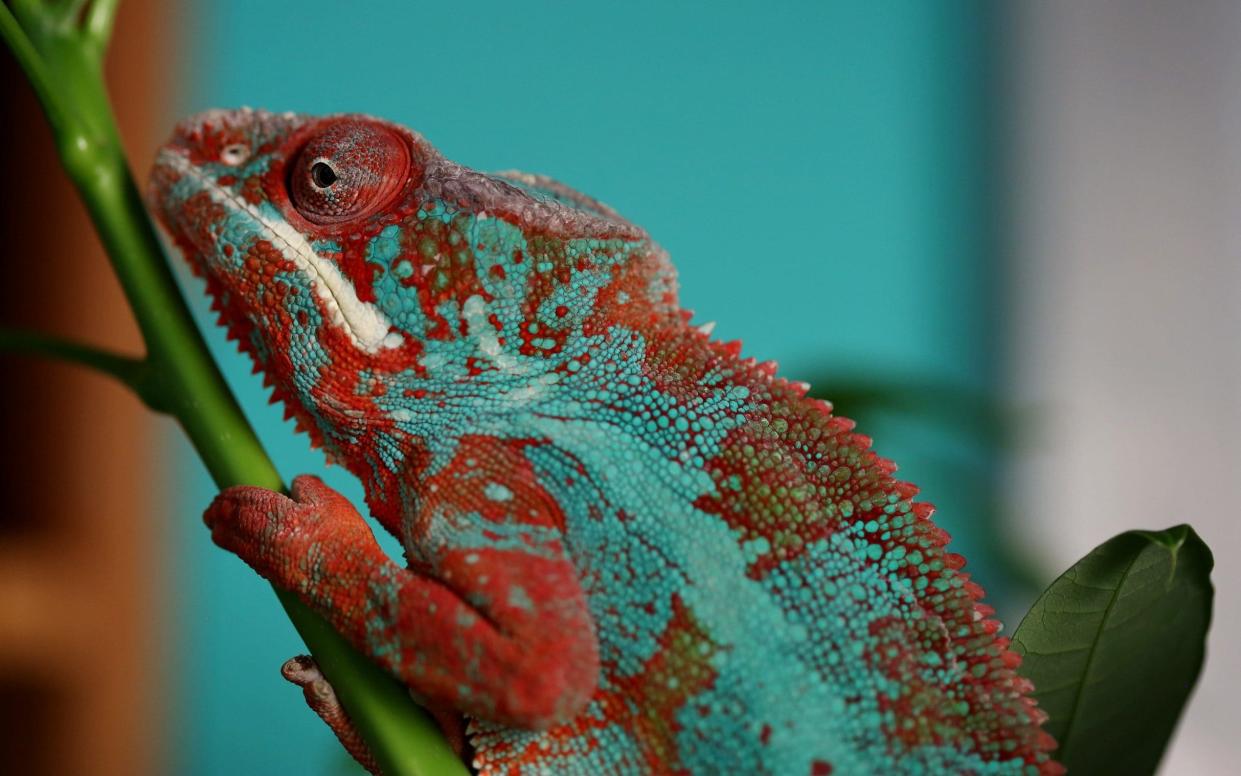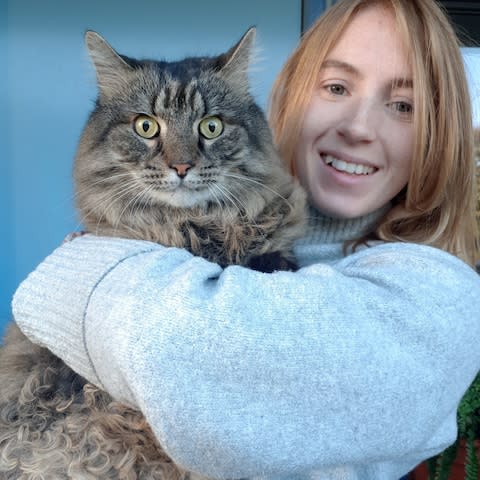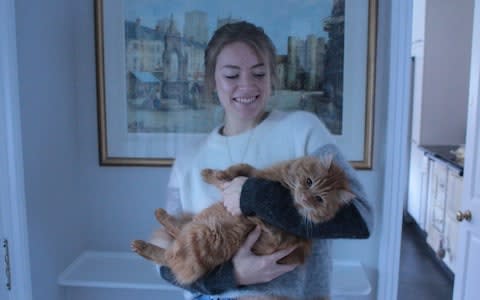'Help, my pet has an embarrassing problem': Telegraph writers share their animal troubles with TV's expert vets

Psychopathic parrots, people-phobic pooches and horses with halitosis; what to do if your beloved pet has become a source of embarrassment? At such times, a crack squad of elite pet experts would be invaluable.
A team like the one Channel 4 has assembled for their new series Embarrassing Pets, in fact. The crew comprises dog behaviourist Leon Towers, animal behaviourist Caroline Clark and vets Deepti Sharma and Gavin McDonagh.
For the sake of entertainment – and of course our education – the show’s producers have located some more challenging cases.
A whippet-collie cross hell-bent on havoc, a smelly shih tzu, and a duck who’s a bit of a diva all feature in the first episode.
If that wasn’t task enough, The Daily Telegraph’s writers have begged the team for help with their own embarrassing pet problems.
Joe Shute
Q I have four chickens – two of them rescue birds – who live in a coop at the end of my garden and regularly have free rein of the lawn. However, this summer I discovered they possess an unfortunate propensity for pecking at people’s toes. How can I bring them under control?
Caroline Clark
AChickens are very inquisitive birds and will often investigate and forage with their beaks. Toes, being skin-toned and at ground level, are prime targets. Avoid open-toed shoes and scatter feed away from your feet.
Another idea is clicker training. I have found this method extremely successful with chickens. By marking desirable behaviours with a distinctive sound, followed by a reward (usually food) your hens will learn to form positive associations with the desired behaviour. Try training them to target a mat placed at some distance from your feet. Much more preferable than toes!

Boudicca Fox-Leonard
QMy rescue cat, Noodle, aged five, is blind. Despite having an enormous litter tray he still manages to miss it once a week. I don’t mind so much, but it’s embarrassing when friends agree to cat-sit for him. Not the perfect house guest! What can I do?
Dr Deepti Sharma
ABelieve it or not, one cat requires at least two litter boxes, so although you have one very large litter tray, it may be time to invest in another. Litter trays can be very complex to get right and when coupled with a blind cat, things can get tricky.
Ensure this is cleaned daily (especially the corners) so that he is not looking for new clean parts of the litter tray that happen to be close to the edge and liable to accidents!
Consider the shape too. A corner litter tray may be good in this instance so spillages are kept within the litter tray. Due to poor Noodle not having any vision, make sure he recognises his new litter tray and tries his best to use them.

Andrew Baker
Q The problem with Sammy the cockapoo, aged six, is that he is perfectly respectful of other fully grown dogs, regardless of size, but he seems to go out of his way to frighten, bark at and otherwise upset puppies and younger dogs whenever we encounter them. This is tricky because Sammy looks puppy-like, friendly and sweet himself and people don’t understand how he can be so horrible to their little ones.
Caroline Clark
AIf Sammy wasn’t exposed to little dogs or puppies during the important socialisation period (three to 12 weeks) then he won’t have learnt how to interact with them. They may even appear alien to him. This can cause a level of anxiety and fear, which often manifests as aggression.
Or, perhaps during his socialisation period, he had an aversive encounter with a small dog and has learned to be fearful of them. As dogs get older and more confident they begin to use more proactive behaviours to try to repel what they think is a threat.
Treatment primarily involves desensitisation and counter-conditioning. You could get someone with a small dog or puppy to meet you in a very quiet location. Make sure that they are far enough away from each other so that Sammy is unreactive. Begin by engaging him in something he enjoys doing and, over time, you should be able to increase their proximity to one another. It’s important not to rush things and do ensure that both dogs remain safely under control.
At the same time, build more positive associations by doing something that Sammy finds emotionally pleasing. This might include play, reward-based training or just being relaxed. This is called counter-conditioning. Very gradually, the intensity of the stimulus is increased as he becomes comfortable and unreactive at each stage of the training.

Paul Hudson
QMy tortoise, Speedou, which I’ve had for more than 50 years, has suddenly become aggressive towards cats coming into my garden. I have two cats and he doesn’t bother them, but as soon as one of the neighbourhood cats dares to climb on to the fence, the tortoise snorts and charges towards the intruder. Speedou is a Mediterranean spur-thighed tortoise. Should I be concerned by this change in his behaviour?
Caroline Clark
AIt’s great to hear that you have had your tortoise for so long. I imagine he is a well-loved member of the family. Although Mediterranean spur-thighed tortoises can live well beyond 50, he is ageing and may be undergoing some physical changes. Sudden deviations in an animal’s behaviour are always a cause for concern, and pain and medical problems can lower the threshold for aggression. Therefore, I would certainly advise a check-over with your vet.
It is possible that, unbeknown to you, one of the cats has frightened or worried him and so he now has a negative association with them. Try to prevent the cats from entering the garden or, when he is unsupervised, keep him in an environmentally enriched enclosure so that cats won’t bother him.

Judith Woods
Q Why does Cornelius, our family chameleon, go on hunger strike? We try to vary his diet for health reasons, but he is so fussy that he refuses to eat for days on end – until his ribs start to show and he looks horribly neglected.
Dr Deepti Sharma
A A “hunger strike”, more commonly known as anorexia, is a symptom, not a disease. It may be due to anything from a medical condition to his environment.
As reptiles are cold-blooded, husbandry plays a vital role in their happiness. This refers to everything from his enclosure’s temperature, lighting, diet and time of feeding, humidity, size and location of enclosure.
Temperature is the biggest factor when it comes to eating. The daytime temperature should be between 77-86F (25-30C), and the night-time temperature should be between 64-73F (18-23C). Chameleons also require at least 12 hours of UVB spectrum lighting a day and a water-drop system, as they will only drink water droplets. Make sure he is being fed the right things; true chameleons are carnivores. Perhaps research where Cornelius would have lived in the wild so that you can mimic this as much as possible at home.
To be safe though, maybe take Cornelius on a little visit to the veterinarian.

Philippa Sloan
Q Every couple of days, my nine-month-old cat, Mo, gets a build-up of black crusty dirt around the rim of his nostrils, which I have to clean out for him. It’s quite a satisfying task, but I do find it strange, considering we’ve never owned a cat in the past that has had such a build-up. Does he have an allergy, or does he just need to learn to wash himself properly?
Dr Deepti Sharma
A Although it may be satisfying to peel off the cat nose crusties, it’s worth having a closer look at them too. Food (especially wet food) particles can come in contact with the nasal region when our cats overzealously indulge. A daily wipe of this region, as well as the chin, which is prone to feline acne, alongside daily disinfection of food bowls should help clear it up. Unfortunately, if it’s not food particles, then it is wise to visit your veterinarian. Nasal discharge can also be indicative of upper respiratory tract infections, especially viruses in young cats (feline calicivirus and feline herpesvirus). Find out your cat’s vaccination status, and if he was exposed to cat flu as a kitten, as this can lead to chronic rhinitis later in life, which is seen as a brown crust formation on the nose.
To find a qualified animal behaviourist in the UK, contact:
the Association of Pet Behaviour Counsellors (APBC); the Animal Behaviour and Training Council (ABTC); or the Association for the Study of Animal Behaviour
Embarrassing Pets starts tomorrow at 5:30pm on Channel 4

 Yahoo News
Yahoo News 